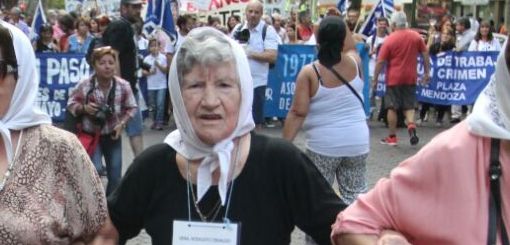On April 30, 1977, a group of mothers gathered for the first time in Plaza de Mayo, in the city of Buenos Aires, to demand the appearance of their sons and daughters, whose whereabouts were unknown to them.
Their children had been taken from their homes, places of work or the street by unidentified armed groups.
Argenti na was going through the first year of its worst dictatorship. A dictatorship that left 30,000 desaparecidos, a foreign multi-million debt, a period that put an end to a decades-long process that, after the struggle of many, had led to more equality in the access to health, education, housing and employment.
na was going through the first year of its worst dictatorship. A dictatorship that left 30,000 desaparecidos, a foreign multi-million debt, a period that put an end to a decades-long process that, after the struggle of many, had led to more equality in the access to health, education, housing and employment.
When the Madres started to meet in the square, Police came up and ordered them to clear the place, since rallies and gatherings were banned amid the curfew implemented by the Junta.
It was then, in that afternoon of 1977, when they overcame fear and silence and started to move, holding each other by the arm, thus circumventing the ban by walking around the square together in what became a symbol of real courage and resistance against the dictatorship, that began to take place every Thursday, in plazas all over the country.
Many of the founding women died victims of State terrorism such as Azucena Villaflor, and many mothers died throughout these decades without finding their children.
But hundreds of them remain fighting still today, like Nora Cortiñas, who continues to set the course with their valiant activism, when inequality, injustice and lies wreak havoc .
Historic 1978 recording when Dutch television interviewed the Mothers who were already dubbed "Las locas de la Plaza", the mad women of the square.






